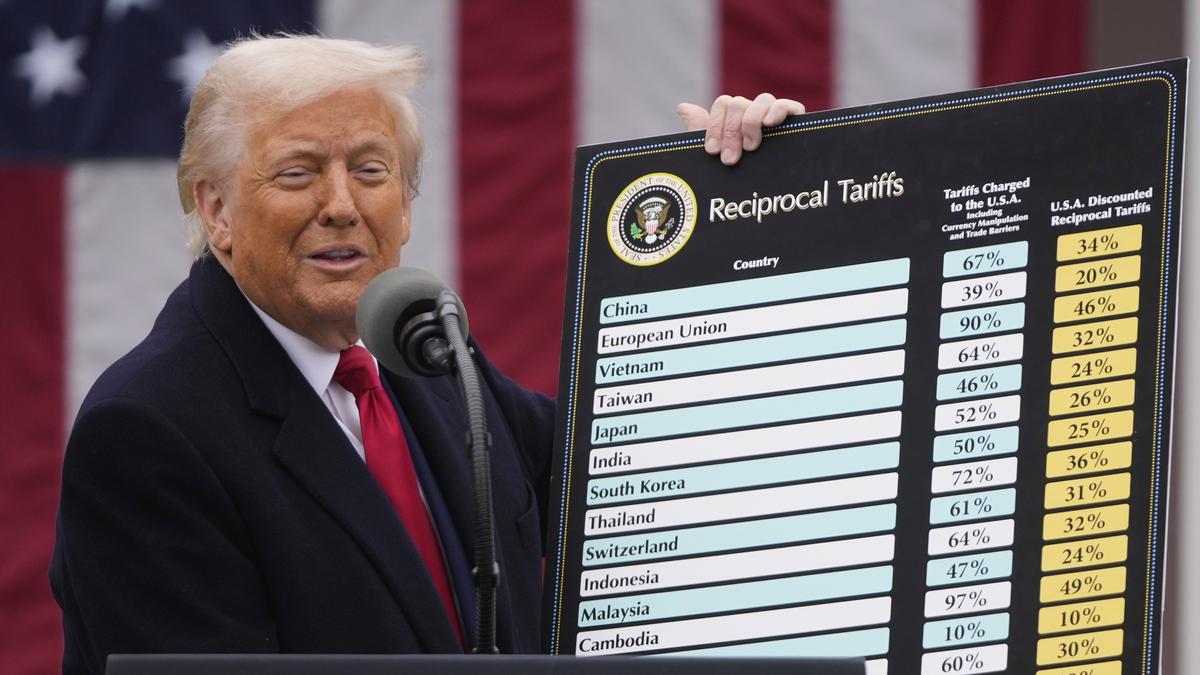
Trump tariffs | Sectors in India that find themselves in a spotlight
The Hindu
Trump's new tariffs on India could impact medical devices, telecom equipment, jewelry, textiles, and vehicular imports.
U.S. President Donald Trump’s “liberation day” reciprocal tariffs announced Wednesday marred all expectations of any relief from the trade policy that has unnerved markets for weeks now. India would face 26% tariff rates in addition to a baseline tariff of 10%.
Mr. Trump argued India subjected U.S. to 52% tariff rates in contrast to Washington charging “almost nothing for years and years and decades”. A similar notion was also cited in the U.S.’ Trade Representative (USTR) report on Foreign Trade Barriers tabled on March 31. Based on the concerns highlighted in the report, initial observations and the sectors highlighted in the Fact Sheet, we list down some industries that may or may not get affected by the recently announced measures:
White House charged India of “uniquely burdensome and/or duplicative testing and certification requirements” before being allowed to sell their chemicals, telecom products and medical devices in India. The USTR report elaborated the criterions of the Bureau of Indian Standards (BIS), that seek mandatory compliance, do not fully align with international standards. Further, it held they do not demonstrate about them being “ineffective or inappropriate”.
According to the White House, U.S. exports of the mentioned products would increase by at least $5.3 billion if barriers are removed.
On the impact to the sector back home, Rajiv Nath, Forum Coordinator at the Association of Indian Medical Device Industry (AiMed), the tariffs may pose a “significant challenge” to the sector’s growth. India is recognised for its cost-effective and high-quality medical devices, primarily in low-volume high value consumables category. “The tariff may possibly impact device exports, and we have to explore window of opportunities from places where U.S. has been seeking to diversify its supply chain dependence on any one nation,” Mr. Nath held. Furthermore, Himanshu Baid, Managing Director of device manufacturer Polymedicure held the country’s primary obstacle entailed non-tariff barriers than barriers themselves. “Regulatory hurdles in the U.S. are steep, with FDA approval costs ranging from $9,280 to over $540,000, whereas U.S. exporters face relatively minimal costs when entering India,” he underlined.
White House charged India of levying tariffs of 10-20% on networking switches and routers tariffs in comparison to nil across the Atlantic. Its concerns in the realm were of a similar nature to medical devices. Back home however, opinion is divided on the tariffs’ potential impact.
According to Professor N.K. Goyal, Chairman Emeritus at the Telecom Equipment Manufacturers Association of India (TEMA), the mobile phone and telecom equipment industry would have no problems if the duties were reduced to zero. He explained IT equipment are already part of WTO agreement most of them covered under zero duty and as of now mobile phones attract duty of 20%. With respect to telecom equipment, Professor Goyal held telecom equipment was earlier coming from China which is not happening now. “We do not see it as a big challenge (reducing duties to zero) because U.S. is not exporting telecom equipment to India but components and raw materials,” he told The Hindu.

 Run 3 Space | Play Space Running Game
Run 3 Space | Play Space Running Game Traffic Jam 3D | Online Racing Game
Traffic Jam 3D | Online Racing Game Duck Hunt | Play Old Classic Game
Duck Hunt | Play Old Classic Game











